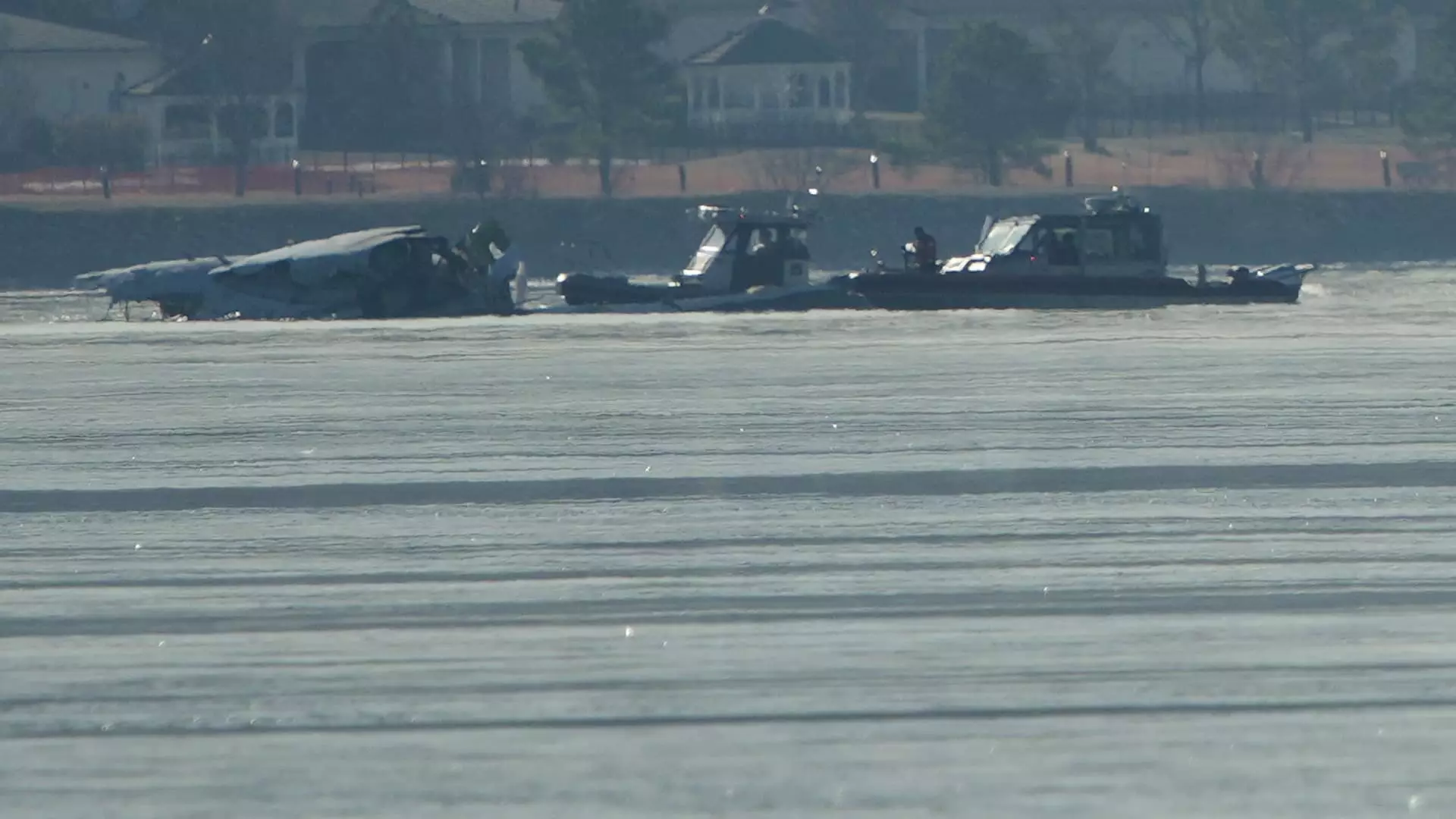On a somber evening, the Potomac River mirrored the chilling events that unfolded, marking a significant tragedy in the annals of American aviation. The collision between an American Airlines regional jet and a military helicopter near Washington, D.C.’s Reagan National Airport has catalyzed a deep-seated conversation about the safety and management of U.S. airspace. With 60 passengers and four crew members aboard the Bombardier CRJ700, along with three personnel on the Army’s Black Hawk helicopter, the situation has been declared the deadliest commercial aviation disaster in the United States since 2001. The loss of all lives involved is not just a statistic; it represents families shattered and communities mourning.
This tragic accident resurfaces critical discussions regarding air traffic congestion and safety protocols that have been simmering under the surface for years. Although formal inquiries are set to commence, the immediate ramifications of this incident touch on the systemic issues plaguing the aviation industry. The lack of a definitive culprit—with officials refraining from attributing blame to air traffic control—has ignited debates among regulators, airline executives, and the government. Concerns are particularly pronounced given a history of near-misses, notably an incident at Reagan National Airport in April involving a potential crash between a JetBlue and a Southwest Airlines flight. The frequency of such close encounters raises alarms about the efficiency and readiness of the current air traffic management systems.
Prominent airline leaders have seized this moment as an urgent call to action for systemic reforms in air traffic control. As these executives advocate for modernization and increased staffing, they evoke the pressing need for a sophisticated framework that can deftly manage the complexities of air travel. Southwest Airlines CEO Bob Jordan articulated a sentiment echoed by many in the industry: the current system has lagged in necessary technological advancements for decades. This assertion raises questions about the political will and resource allocation devoted to ensuring public safety in the skies.
As the National Transportation Safety Board (NTSB) embarks on a comprehensive investigation, the aviation community watches closely, hoping to glean lessons that could prevent future tragedies. Such inquiries often take significant time, potentially extending well beyond a year, which can leave families in limbo while officials piece together the events leading up to the crash. Focused not only on recovery, these investigations will critically evaluate existing safety practices and may prompt much-needed operational changes to improve the overall security of air travel.
Ultimately, this tragedy transcends the immediate loss of life and invites a broader contemplation of the safety priorities against the backdrop of increasing air travel demand. The balance between expedited travel and passenger safety must be reassessed to instill more robust safeguards in an era defined by congestion. As communities rally and grief takes center stage, this moment must also be seen as an impetus for significant changes—because ensuring the safety of our skies is paramount, and no amount of airspace congestion should compromise human lives.


Leave a Reply